Laura Beggel
Benchmarking time series classification -- Functional data vs machine learning approaches
Nov 18, 2019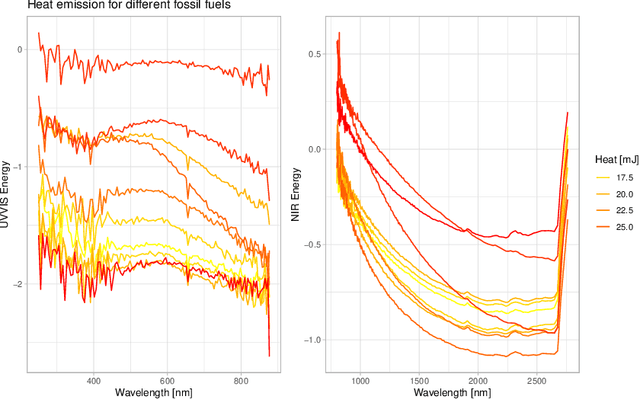
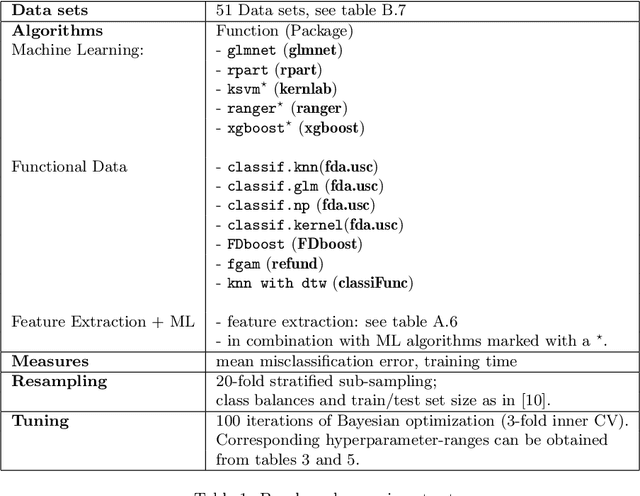
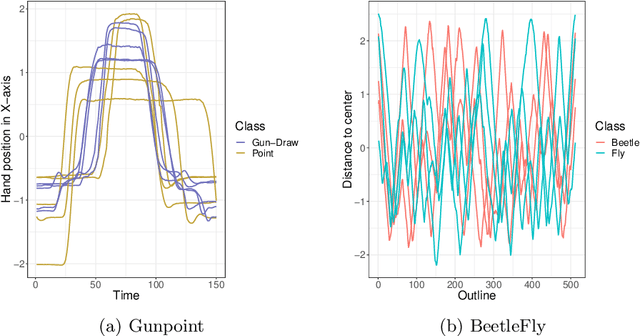
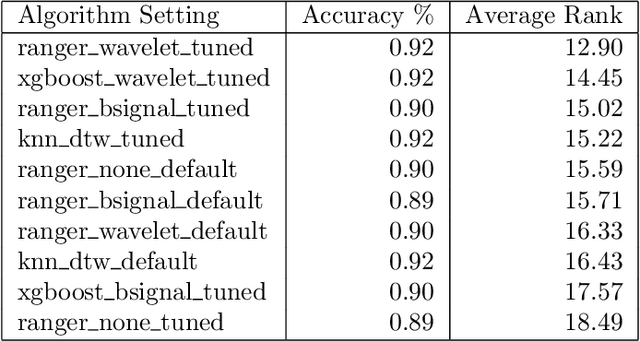
Abstract:Time series classification problems have drawn increasing attention in the machine learning and statistical community. Closely related is the field of functional data analysis (FDA): it refers to the range of problems that deal with the analysis of data that is continuously indexed over some domain. While often employing different methods, both fields strive to answer similar questions, a common example being classification or regression problems with functional covariates. We study methods from functional data analysis, such as functional generalized additive models, as well as functionality to concatenate (functional-) feature extraction or basis representations with traditional machine learning algorithms like support vector machines or classification trees. In order to assess the methods and implementations, we run a benchmark on a wide variety of representative (time series) data sets, with in-depth analysis of empirical results, and strive to provide a reference ranking for which method(s) to use for non-expert practitioners. Additionally, we provide a software framework in R for functional data analysis for supervised learning, including machine learning and more linear approaches from statistics. This allows convenient access, and in connection with the machine-learning toolbox mlr, those methods can now also be tuned and benchmarked.
SELF: Learning to Filter Noisy Labels with Self-Ensembling
Oct 04, 2019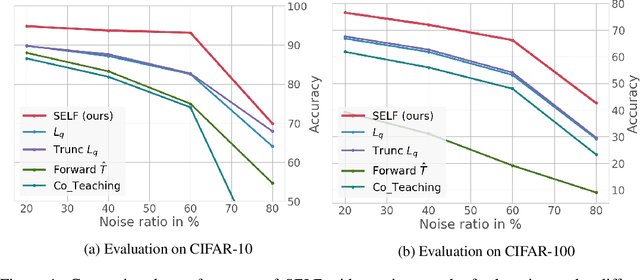
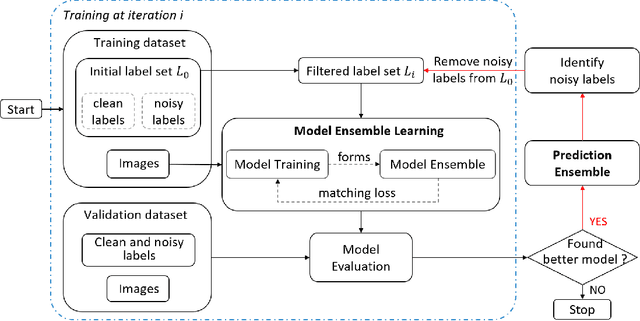
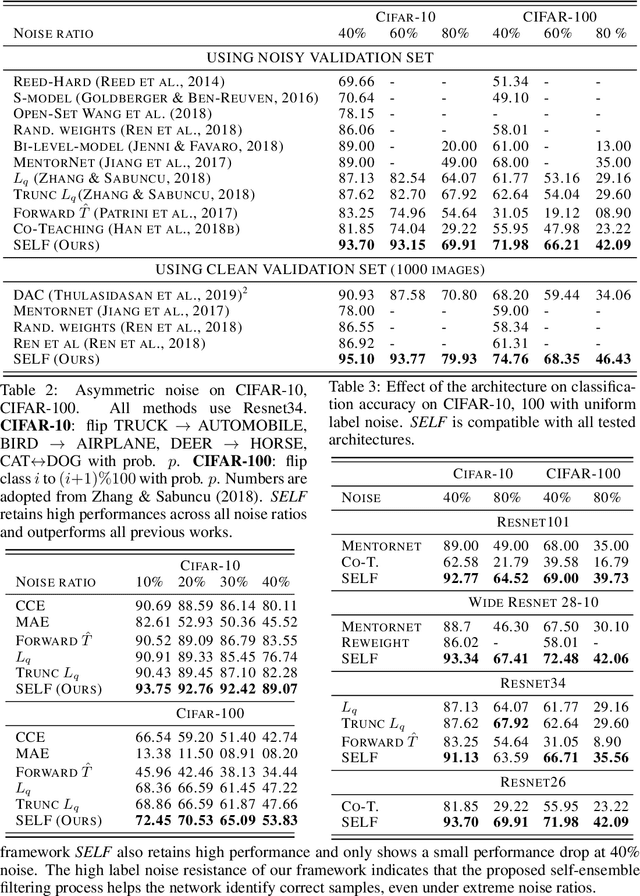

Abstract:Deep neural networks (DNNs) have been shown to over-fit a dataset when being trained with noisy labels for a long enough time. To overcome this problem, we present a simple and effective method self-ensemble label filtering (SELF) to progressively filter out the wrong labels during training. Our method improves the task performance by gradually allowing supervision only from the potentially non-noisy (clean) labels and stops learning on the filtered noisy labels. For the filtering, we form running averages of predictions over the entire training dataset using the network output at different training epochs. We show that these ensemble estimates yield more accurate identification of inconsistent predictions throughout training than the single estimates of the network at the most recent training epoch. While filtered samples are removed entirely from the supervised training loss, we dynamically leverage them via semi-supervised learning in the unsupervised loss. We demonstrate the positive effect of such an approach on various image classification tasks under both symmetric and asymmetric label noise and at different noise ratios. It substantially outperforms all previous works on noise-aware learning across different datasets and can be applied to a broad set of network architectures.
Robust Learning Under Label Noise With Iterative Noise-Filtering
Jun 01, 2019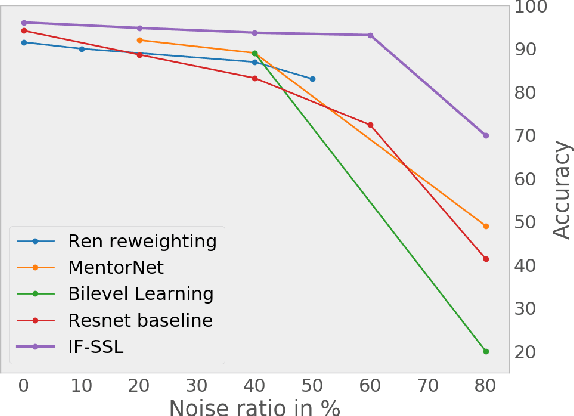
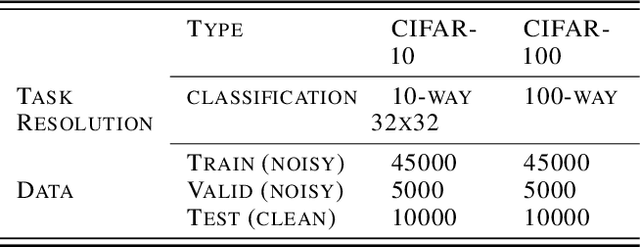
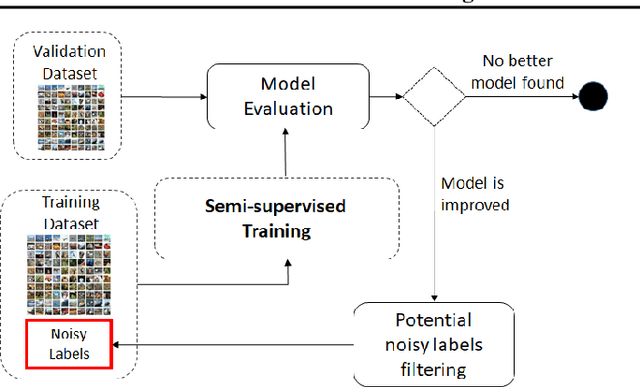
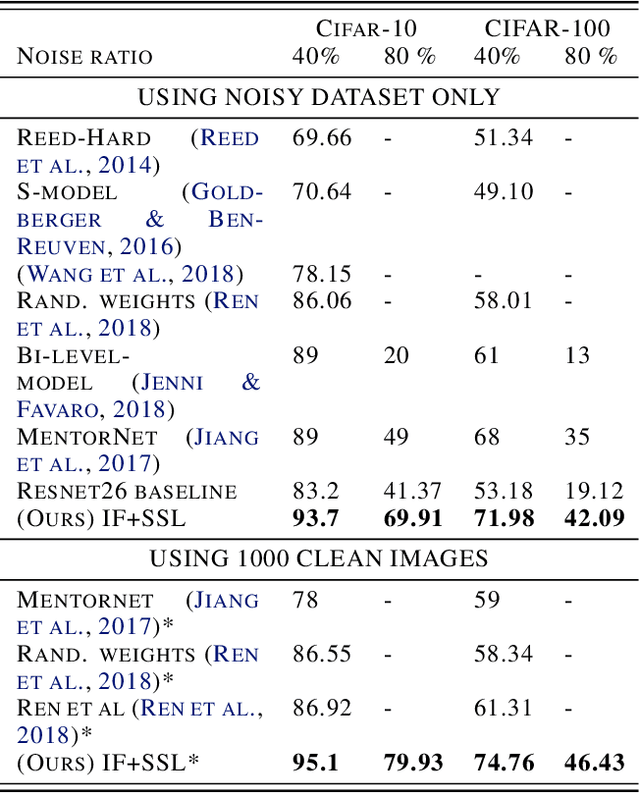
Abstract:We consider the problem of training a model under the presence of label noise. Current approaches identify samples with potentially incorrect labels and reduce their influence on the learning process by either assigning lower weights to them or completely removing them from the training set. In the first case the model however still learns from noisy labels; in the latter approach, good training data can be lost. In this paper, we propose an iterative semi-supervised mechanism for robust learning which excludes noisy labels but is still able to learn from the corresponding samples. To this end, we add an unsupervised loss term that also serves as a regularizer against the remaining label noise. We evaluate our approach on common classification tasks with different noise ratios. Our robust models outperform the state-of-the-art methods by a large margin. Especially for very large noise ratios, we achieve up to 20 % absolute improvement compared to the previous best model.
Robust Anomaly Detection in Images using Adversarial Autoencoders
Jan 18, 2019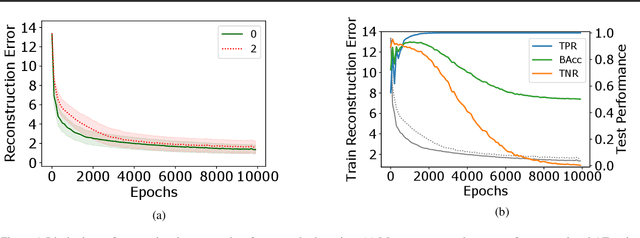
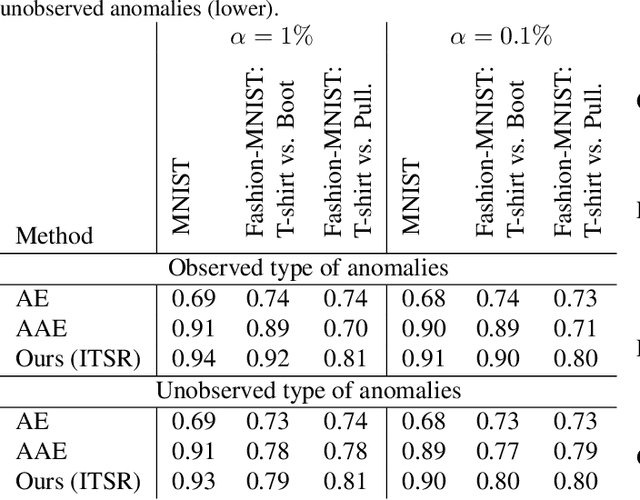
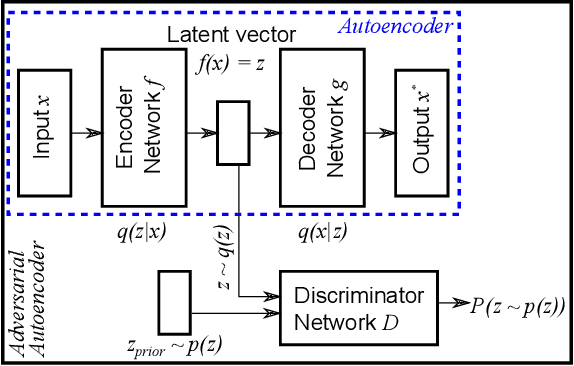
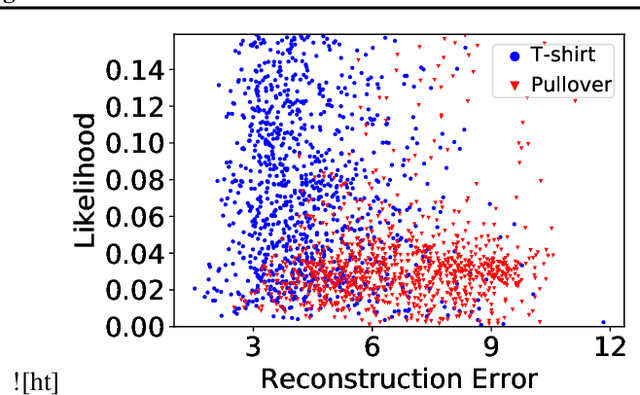
Abstract:Reliably detecting anomalies in a given set of images is a task of high practical relevance for visual quality inspection, surveillance, or medical image analysis. Autoencoder neural networks learn to reconstruct normal images, and hence can classify those images as anomalies, where the reconstruction error exceeds some threshold. Here we analyze a fundamental problem of this approach when the training set is contaminated with a small fraction of outliers. We find that continued training of autoencoders inevitably reduces the reconstruction error of outliers, and hence degrades the anomaly detection performance. In order to counteract this effect, an adversarial autoencoder architecture is adapted, which imposes a prior distribution on the latent representation, typically placing anomalies into low likelihood-regions. Utilizing the likelihood model, potential anomalies can be identified and rejected already during training, which results in an anomaly detector that is significantly more robust to the presence of outliers during training.
 Add to Chrome
Add to Chrome Add to Firefox
Add to Firefox Add to Edge
Add to Edge